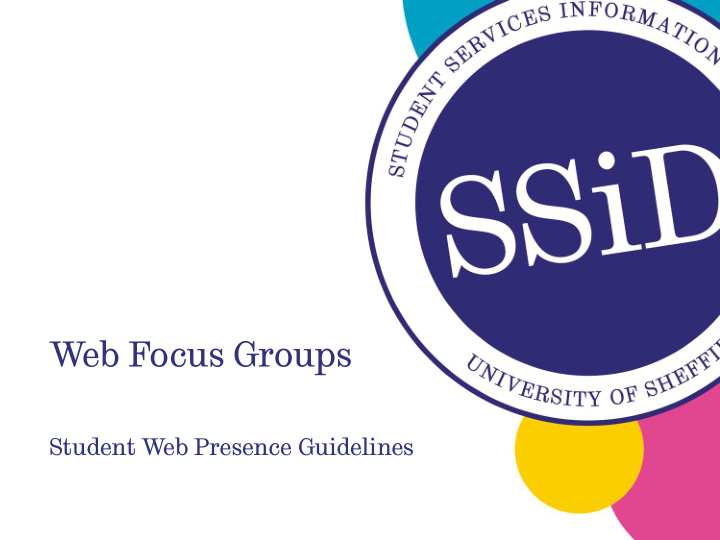



Web Focus Groups Student Web Presence Guidelines
Focus Groups • Traditional marketing research technique (the mostly widely used qualitative tool ) • Marketers have applied this technique to the web because it is seen as an important tool for acquiring feedback regarding new products. • Choosing the right participants is critical to success. • Group discussion produces insights that would be less accessible without interaction found in a group setting. • The results obtained are influenced by the researcher or his own reading of the group's discussion. • Sometimes the responses are answers the participants feel that the moderator wants to hear. • Viewed by usability experts as a poor method for evaluating interface usability.
A Word of Caution “People with an advertising or marketing background often rely solely on focus groups to expose products to users. Thus, because advertising and marketing people frequently contribute to web site development, focus groups are often used to evaluate Web projects. Unfortunately, focus groups are a rather poor method for evaluating interface usability.” Nielsen (1997) “When the last-minute request is for a focus group, it’s usually a sign that the request originated in Marketing. As the launch date approaches, the Marketing people may feel that their only hope of sanity prevailing is to appeal to a higher authority: research. And the kind of research they know is focus groups. I often have to work very hard to make clients understand that what they need is usability testing, not focus groups.” Krug (2014) “If your web team is part of a marketing department or you are in an agency that works primarily with marketing departments, you may hear, “we do usability testing; we get people together in a focus group.” A focus group is not the same as usability testing. They are different techniques that get you different information.” Reddish ()
Conducting a Focus Group Decide on subjects you would like to cover during the session 1. Select six to nine participants representative of your audience 2. Test questions before the session to ensure they are clear and logical 3. Make sure questions are open-ended to encourage discussion 4. Organise your questions in a way that flows naturally 5. Select a skilled moderator to facilitate the discussion 6. Develop a script so the moderator knows the subjects to cover and questions to 7. ask Let the moderator change the order of questions keep the discussion flowing. 8. Plan to spend about two hours with the group 9. Record the sessions 10. Have one or more note takers to ensure everything is captured 11.
Focus Groups vs Usability Tests Focus Group Usability testing Group of people One to one Users talk Users act Record feelings and opinions Observe how people use things What users say What users do Users expectations How users perform tasks Reaction Interaction Abstract wants, needs and likes Actual wants, needs and likes What user want Whether something works Understanding peoples feelings Learning how people use things Early in project After development finished
References Focus Groups Vs Usability Testing by Chris Gieger September 8, 2013 • http://www.uxteam.com/blog/focus-groups-vs-usability-testing/ Myth #26: Usability testing = focus groups • http://uxmyths.com/post/1319999199/myth-26-usability-testing-focus-groups The Use and Misuse of Focus Groups by Jakob Nielsen on January 1, 1997 • http://www.nngroup.com/articles/focus-groups/ Reddish J (2012) “Letting Go of the Words”, second edition, Morgan Kaufman • Krug S (2014) “Don’t Make Me Think” 3rd edition, new Riders •
Recommend
More recommend